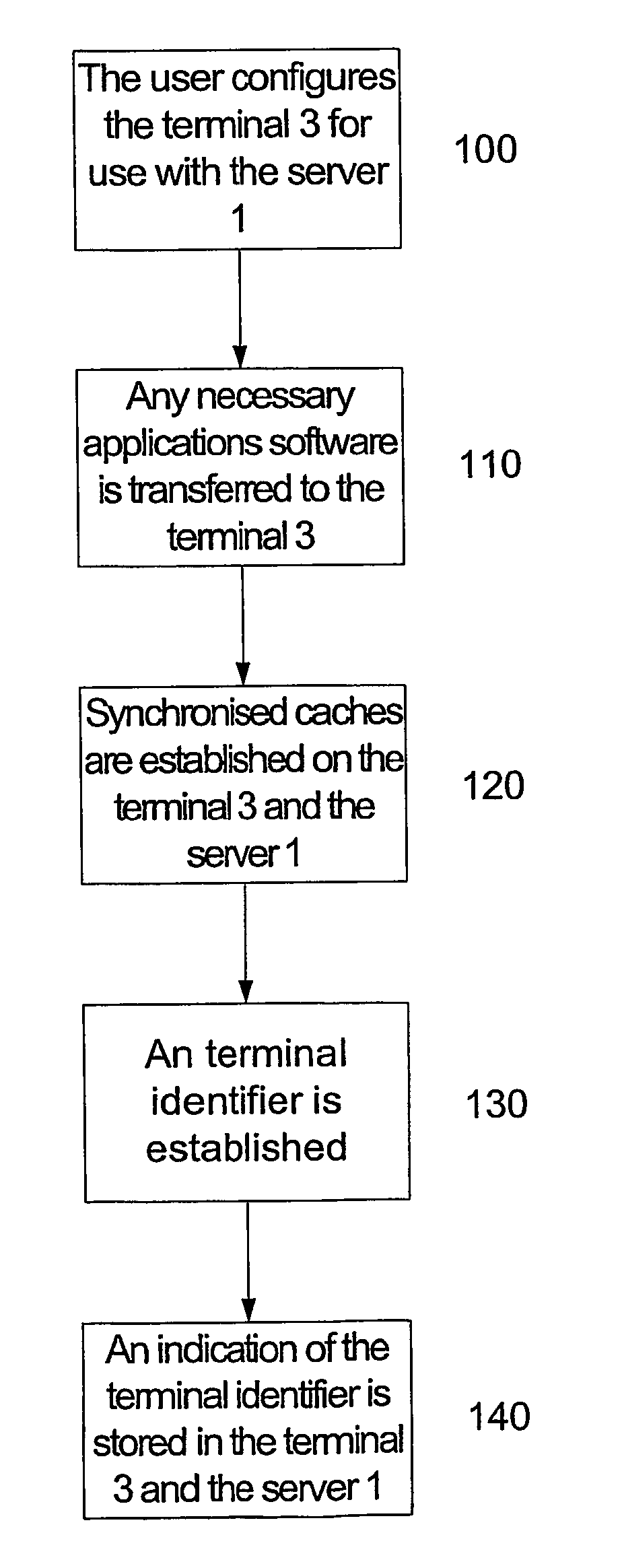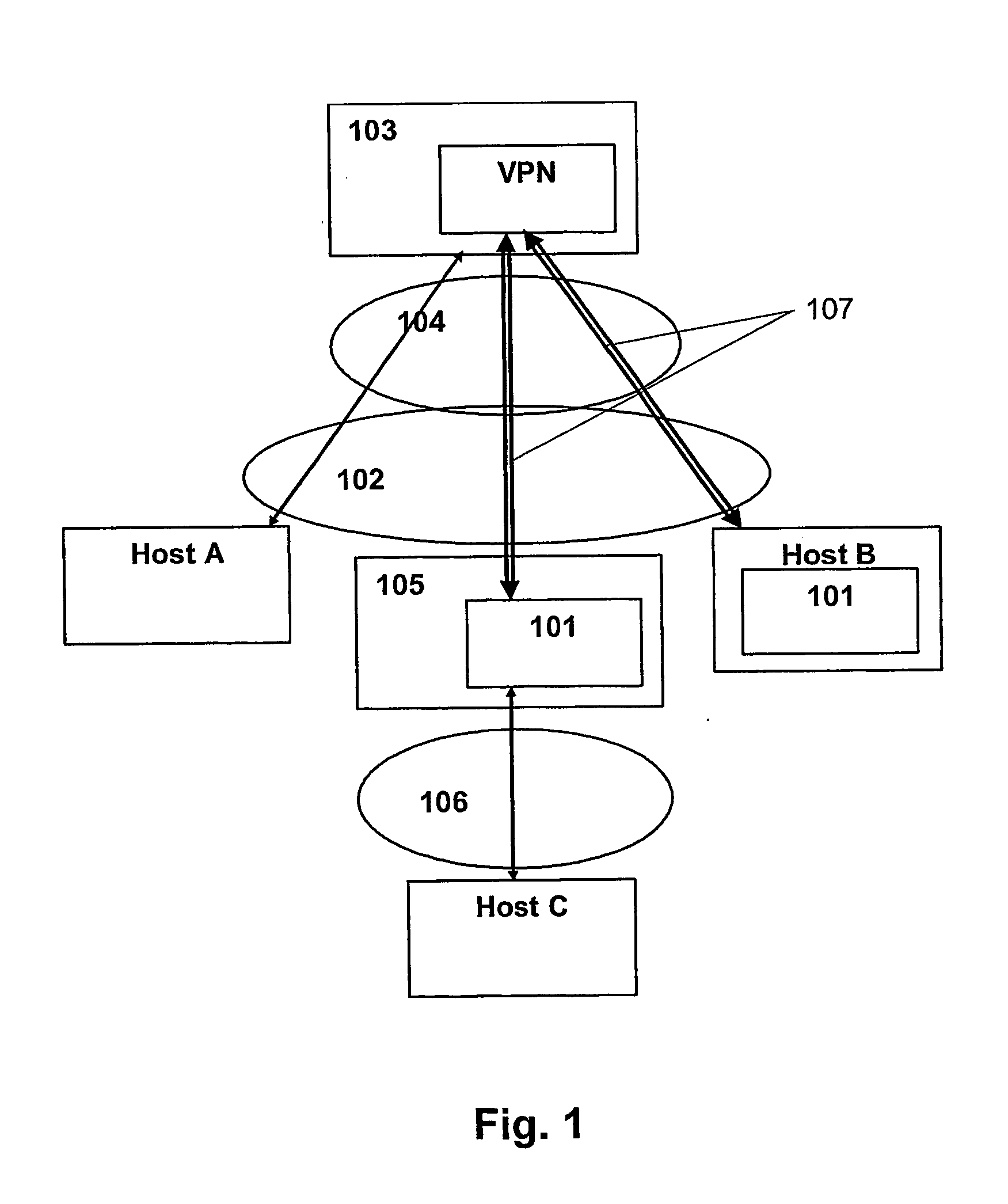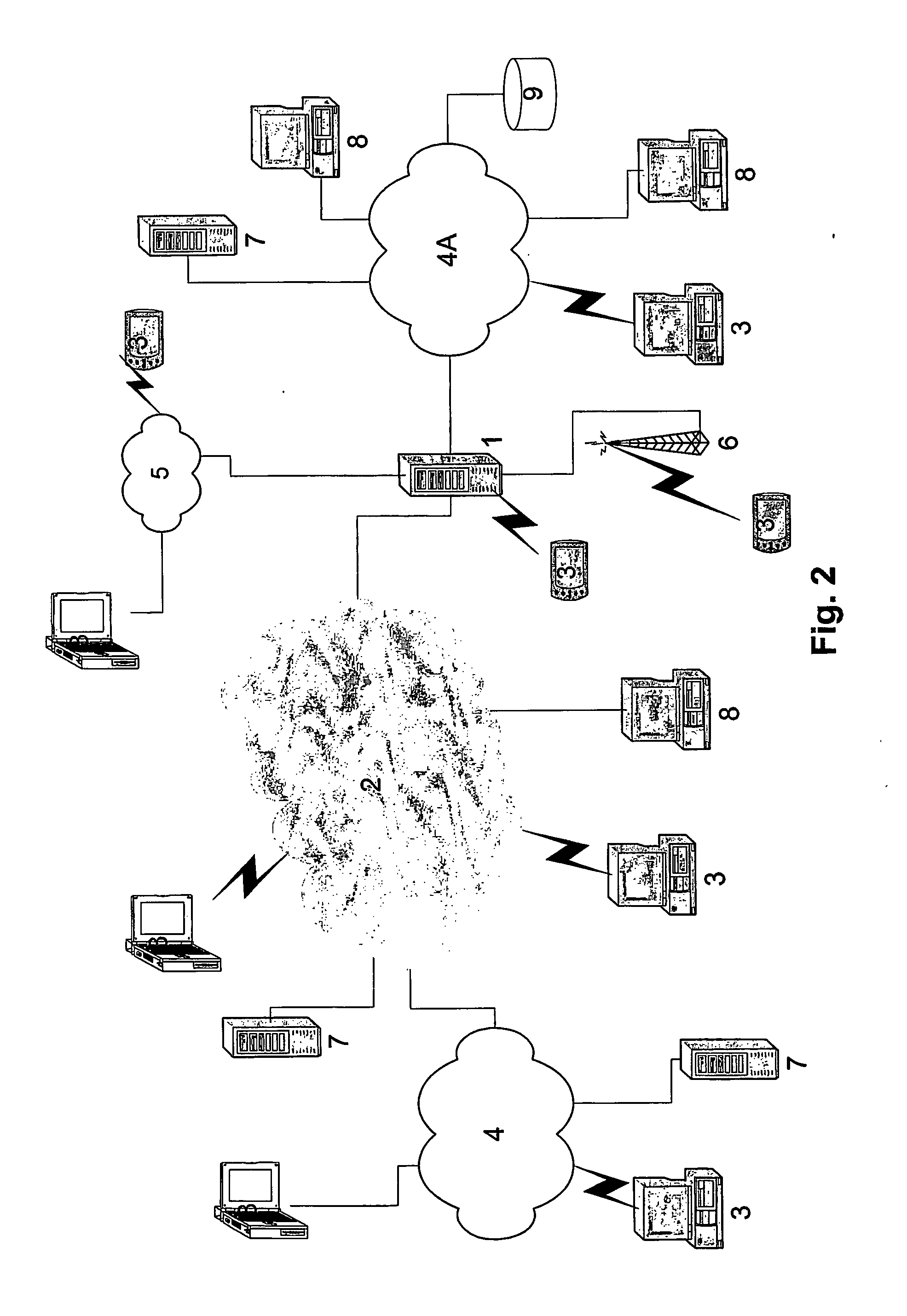Terminal connectivity system
a terminal and connectivity technology, applied in the field of terminals, can solve problems such as security and service quality threats, operating cost and connectivity problems, and drawbacks of existing systems
- Summary
- Abstract
- Description
- Claims
- Application Information
AI Technical Summary
Benefits of technology
Problems solved by technology
Method used
Image
Examples
specific examples
[0301] Two specific examples of the invention will now be described.
[0302] The first example described above with respect to FIG. 4, will now be described in more detail. In particular, in this example, the connection 10 between the terminal 3 and the SUTTAC-Server 1 is implemented as a cached, compressed, persistent, secure, switched (CCPSS) tunnel.
[0303] In this case, as mentioned above, the terminal 3 typically includes at least one network interface, and fitted with the client module, embodied as a software, firmware or hardware implementation.
[0304] Similarly, the SUTTAC-Server 1, which operates as the SUTTAC-Server (and will hereafter be referred to as the SUTTAC-Server), is typically a computer provided with at least one network interface, and fitted with the SUTTAC-Server module 1A, embodied as a software, firmware or hardware implementation.
[0305] The CCPSS tunnel is the logical connection and protocol used to transfer data between the terminal and SUTTAC-Server. As ill...
PUM
 Login to View More
Login to View More Abstract
Description
Claims
Application Information
 Login to View More
Login to View More - R&D
- Intellectual Property
- Life Sciences
- Materials
- Tech Scout
- Unparalleled Data Quality
- Higher Quality Content
- 60% Fewer Hallucinations
Browse by: Latest US Patents, China's latest patents, Technical Efficacy Thesaurus, Application Domain, Technology Topic, Popular Technical Reports.
© 2025 PatSnap. All rights reserved.Legal|Privacy policy|Modern Slavery Act Transparency Statement|Sitemap|About US| Contact US: help@patsnap.com



